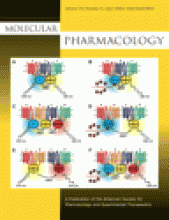Abstract
Kv1.3 potassium channels maintain the membrane potential of effector memory (TEM) T cells that are important mediators of multiple sclerosis, type 1 diabetes mellitus, and rheumatoid arthritis. The polypeptide ShK-170 (ShK-L5), containing an N-terminal phosphotyrosine extension of the Stichodactyla helianthus ShK toxin, is a potent and selective blocker of these channels. However, a stability study of ShK-170 showed minor pH-related hydrolysis and oxidation byproducts that were exacerbated by increasing temperatures. We therefore engineered a series of analogs to minimize the formation of these byproducts. The analog with the greatest stability, ShK-192, contains a nonhydrolyzable phosphotyrosine surrogate, a methionine isostere, and a C-terminal amide. ShK-192 shows the same overall fold as ShK, and there is no evidence of any interaction between the N-terminal adduct and the rest of the peptide. The docking configuration of ShK-192 in Kv1.3 shows the N-terminal para-phosphonophenylalanine group lying at the junction of two channel monomers to form a salt bridge with Lys411 of the channel. ShK-192 blocks Kv1.3 with an IC50 of 140 pM and exhibits greater than 100-fold selectivity over closely related channels. After a single subcutaneous injection of 100 μg/kg, ∼100 to 200 pM concentrations of active peptide is detectable in the blood of Lewis rats 24, 48, and 72 h after the injection. ShK-192 effectively inhibits the proliferation of TEM cells and suppresses delayed type hypersensitivity when administered at 10 or 100 μg/kg by subcutaneous injection once daily. ShK-192 has potential as a therapeutic for autoimmune diseases mediated by TEM cells.
Footnotes
-
This work was supported by National Institutes of Health National Institute of Neurological Disorders and Stroke [Grant NS48252]; the American Heart Association [Grant 0665009Y]; and a fellowship from the Australian National Health and Medical Research Council.
-
ABBREVIATIONS: MS, multiple sclerosis; TEM, effector memory T cells; RA, rheumatoid arthritis; TCM, central memory T cells; EAE, experimental autoimmune encephalomyelitis; At-EAE, adoptive transfer experimental autoimmune encephalomyelitis; DTH, delayed type hypersensitivity; PLGA, poly(d,l-lactic-co-glycolic acid); Ppa, para-phosphonophenylalanine; Fmoc, 9-fluorenylmethoxycarbonyl; Pmp, phosphonomethyl phenylalanine; TFA, trifluoroacetic acid; RP-HPLC, reversed-phase high-performance liquid chromatography; TOCSY, total correlation spectroscopy; NOE, nuclear Overhauser enhancement; NOESY, nuclear Overhauser enhancement spectroscopy; MD, molecular dynamics; HERG, human ether-á-go-go-related gene; DA, dark Agouti.
-
↵
 The online version of this article (available at http://molpharm.aspetjournals.org) contains supplemental material.
The online version of this article (available at http://molpharm.aspetjournals.org) contains supplemental material. - Received October 13, 2008.
- Accepted January 2, 2009.
- The American Society for Pharmacology and Experimental Therapeutics
MolPharm articles become freely available 12 months after publication, and remain freely available for 5 years.Non-open access articles that fall outside this five year window are available only to institutional subscribers and current ASPET members, or through the article purchase feature at the bottom of the page.
|







